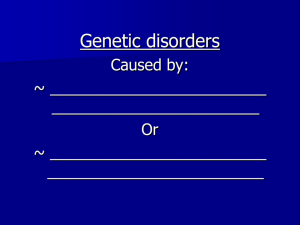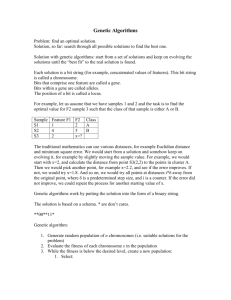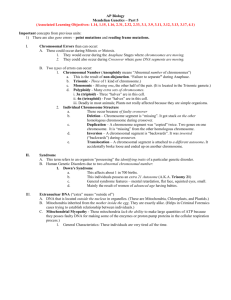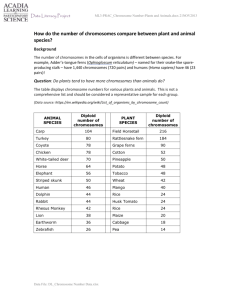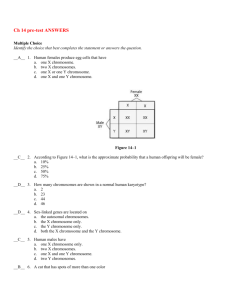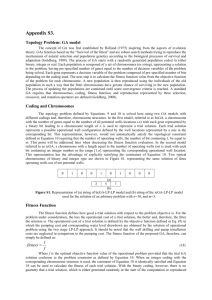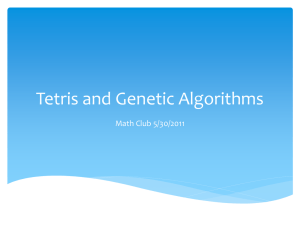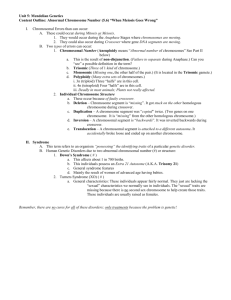Presentation
advertisement
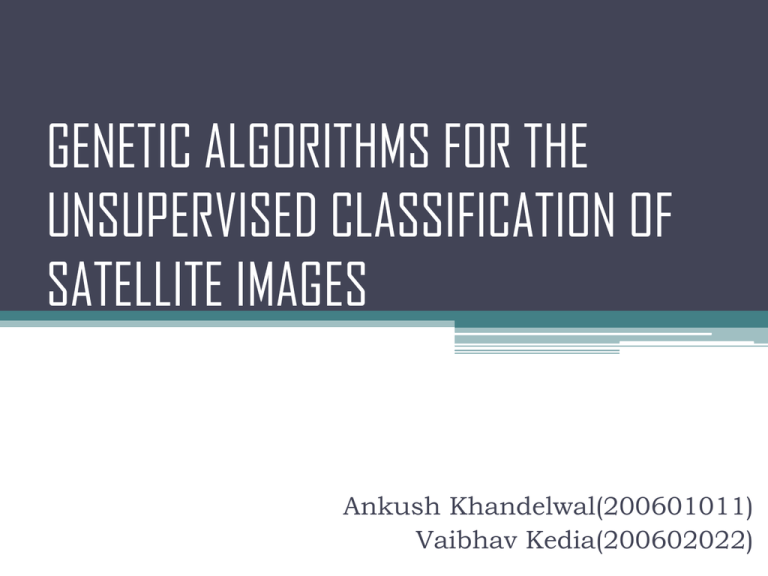
GENETIC ALGORITHMS FOR THE UNSUPERVISED CLASSIFICATION OF SATELLITE IMAGES Ankush Khandelwal(200601011) Vaibhav Kedia(200602022) Motivation behind Genetic algorithms • Problems in classification of scenes with dynamic objects. Temporal variation of cluster centroids. Temporal variation in number of classes. Outline • • • • Feature Space Basic Algorithm Problems in statistical tools used in the paper Solutions to the problems faced. Feature Space • In multispectral images, the bands form the axis of the feature space • Here we have used a three dimensional feature space consisting of three bands of a LANDSAT image 520nm-600nm(green band) 630nm-690nm(red band) 760nm-900nm(Near InfraRed band) BASES OF GENETIC ALGORITHM(GA) • In GA applications, the unknown parameters are encoded in the form of strings, so-called chromosomes. • Each unit represents a combination of brightness values, one for each band, and thus a potential cluster centroid. Chromosome Representation • The length of the chromosome, K, is equivalent to the number of clusters in the classification problem. Chromosome initialization • At the beginning, for each chromosome i (i =1, 2,…,.P, where P is the size of population) all values are chosen randomly from the data space. • One (arbitrary) chromosomes of the parent generation is given here: -1 (110, 88, 246) (150, 78, 226) -1 (11, 104, 8) (50,100, 114) -1 (227, 250, 192) Crossover • The purpose of the crossover operation is to create two new individual chromosomes from two existing chromosomes selected randomly from the current population. Crossover Example • Parent1 : -1 (110, 88, 246) (150, 78, 226) -1 (11, 104, 8) (50, 100, 114) -1 (227, 250, 192) • Parent2 : (210, 188, 127) (110, 88, 246) -1 -1 (122, 98, 45) -1 (98, 174, 222) (125, 101, 233) • Child1 : -1 (110, 88, 246) (150, 78, 226) -1 (122, 98, 45) -1 (98, 174, 222) (125, 101, 233) • Child2 : (210, 188, 127) (110, 88, 246) -1 -1 (11, 104, 8) (50, 100, 114) -1 (227, 250, 192) Mutation • During mutation, all the chromosomes in the population are checked unit by unit and according to a pre-defined probability all values of a specific unit may be randomly changed. Mutation Example • Old string: (210, 188, 127) (110, 88, 246) -1 -1 (122, 98, 45) -1 (98, 174, 222) (125, 101, 233) • New string: (210, 188, 127) (97, 22, 143) -1 -1 (122, 98, 45) -1 (98, 174, 222) (125, 101, 233) Indices identification • Based on crossover and mutation the chromosomes, once initialized, iteratively evolve from one generation to the next. • In order to be able to stop this iterative process, a so-called fitness function needs to be defined to measure the fitness or adaptability of each chromosome in the population. • The value of fitness is also called index. • Here, the DBI was adopted. Basic Algorithm The Davies-Bouldin's Index Problems in Statistical Tools used in the Paper • The random selection of the chromosome from the huge universal data set makes this algorithm not an efficient way of classifying the image. • Sometimes the index favored wrong chromosome for classification because of the favoritism towards high interclass distance rather than the low sum of the standard deviations. Solutions to the problems • Using local maximas of histograms to decrease the size of the alphabet producing chromosome units. • We took multiplication of count and standard deviation as our maximizing factor . Results from Given Method Results from Our Method References • Genetic Algorithms for the unsupervised classification of satellite images, Y.F Yang, P. Lohmann , C. Heipke • Genetic Algorithms in search optimization and machine learning by David E Goldberg • Genetic clustering for automatic evolution of clusters and application to image classification, Bandyopadhyay , Maulik


